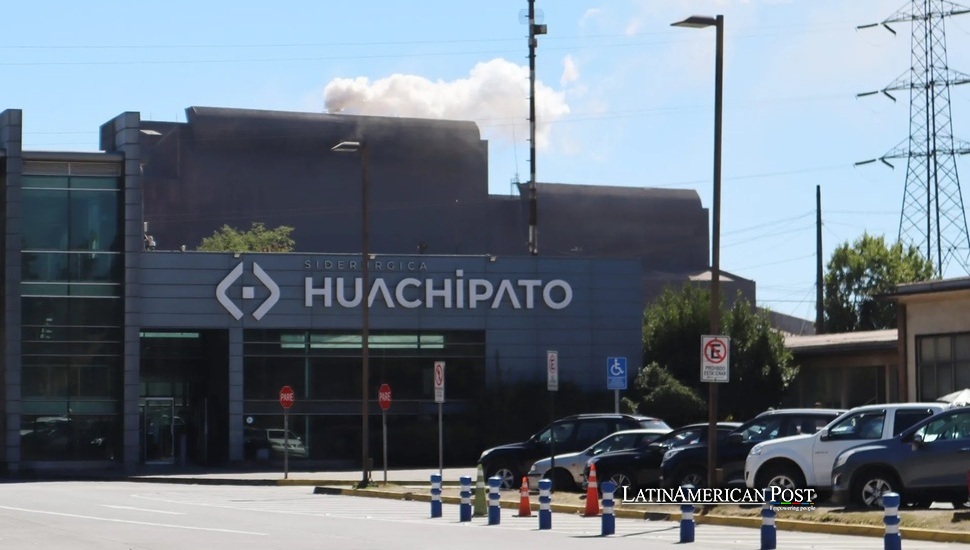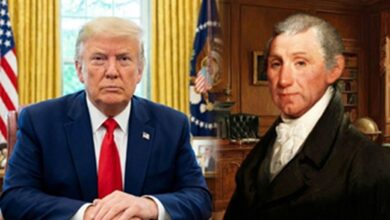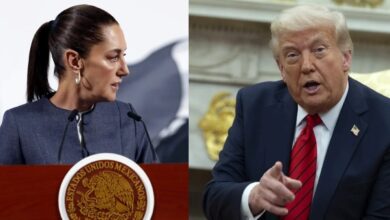Latin America Builds Strategic Steel Defense Against China

Latin America’s steelmakers warned Washington to unite against China’s claimed unfair trade practices. As U.S. tariffs on steel imports affect global markets, regional producers plan to form new alliances to guard key industries.
A Surprising Tariff Blow
Steelmakers in Latin America were caught off guard when former U.S. President Donald Trump announced 25 percent tariffs on steel imports from all trade partners, initially set to take effect in March. The shock ran especially deep in Brazil and Mexico, two top steel exporters to the United States. Along with Canada, they have historically benefited from significant trade flows that rely on the free movement of steel and aluminum. Suddenly, these nations and their steelmakers faced a future of heavy levies on cross-border sales despite having no direct role in the Chinese overproduction that Trump cited as his justification.
In response, the Asociación Latinoamericana de Acero (Alacero) unveiled a statement condemning the indiscriminate nature of the new tariffs. Alacero represents around sixty steel companies responsible for producing roughly sixty million tons of crude steel annually, supporting 1.3 million jobs across Latin America. The association voiced frustration at the decision to lump Latin American nations in with alleged steel-dumping countries, particularly China. According to Alacero, the region’s steel industry suffers from the same influx of artificially cheap Chinese steel that Trump had vowed to combat. Latin American producers fear being collateral damage in this ongoing trade war.
The root of the problem, Alacero claims, is China’s global rise in steel exports. For more than 15 years, Latin American steel bosses have complained about Beijing’s government effort to boost production. This effort filled international markets with subsidized steel sold below local prices. In their view, the new U.S. tariffs address only a tiny piece of a broad, systemic challenge. Thus, Alacero has proposed a strategic alliance among U.S. steelmakers and governments across the Americas, believing a cohesive, unified supply chain can stand stronger against what they call China’s “unfair trade practices.”
Latin America’s Plea for Cooperation
Alacero’s statement went beyond merely condemning Trump’s measures. It presented a call to act; it asked for a stronger, long-term partnership between the United States and Latin America in steel manufacturing. This plan to build a joint strategic network rests on two central supports. Latin American companies have a strong capacity and long experience in making certain types of steel that add to U.S. domestic supply. Second, the region’s steel industry also touts a relatively low carbon footprint, which could help Washington and other regional players meet rising environmental standards.
The association believes that if steel trade within the Americas is facilitated and integrated, governments can more effectively respond to security concerns and potential shortfalls caused by unforeseen global disruptions. Indeed, many in the region point out that by imposing blanket tariffs, the United States might inadvertently undermine reliable supply routes for specialized steel in industries such as automotive, defense, oil exploration, and construction. While Trump’s move aimed to protect U.S. steelworkers, many analysts warn that heightened tariffs can ultimately hamper downstream manufacturers, lead to job losses, and increase consumer prices.
To advance this strategic alliance, Alacero envisions a supply chain that prioritizes steel sourced within the Western Hemisphere, reducing reliance on distant producers like China and shielding American and Latin American markets from gluts of artificially cheap steel. If the United States and Latin America coordinated more closely—possibly through bilateral deals or region-wide pacts—there would be greater leverage to counter China’s overcapacity. Theoretically, a united front could impose targeted quotas or anti-dumping measures while pooling shared resources to ensure a stable supply of high-quality steel.
This is not a purely theoretical exercise. Many Latin American countries, including Mexico, Brazil, and Argentina, have initiated or toughened their anti-dumping regulations against Chinese steel for years. Despite these efforts, local industries still compete with imports subsidized or priced below market value. As U.S. policy now also becomes more defensive, Alacero insists the timing could not be better for forging a hemispheric steel strategy that both leverages collective strengths and mitigates risks of overreliance on Asian markets.
The Broader Impact of U.S. Tariffs
Although China served as the chief rationale for the steel tariffs, Beijing’s direct exports to the United States were minimal due to existing duties. Instead, U.S. tariffs fell more heavily on close trading partners. Canada, Mexico, and Brazil found themselves without any immediate exemptions, though some deals were later negotiated. These countries typically ship specialized steel products that the United States does not produce in sufficient quantities, such as pipe and tube steel that can withstand extreme drilling conditions. Critics argued that punishing these trustworthy suppliers was a self-inflicted wound on the U.S. manufacturing sector and North American supply chains.
Trade experts note that although tariffs can give a short-term boost to domestic steel mills by raising prices, the cost often ripples through the larger economy. Industries like aerospace, auto manufacturing, construction, and packaging rely on affordable, readily available steel for their production processes. Their competitiveness can erode if they must absorb higher input costs or pass them on to consumers. In 2018, researchers estimated that the Trump administration’s steel tariffs contributed to direct job losses in some steel-using manufacturing sectors, further magnified by retaliatory tariffs on different American exports from other countries.
Latin American producers, however, remained incredibly frustrated that the crackdown happened without nuanced differentiation between countries that allegedly engage in dumping and those that abide by fair trade practices. Alacero’s statement underscores that the region shares the U.S. complaint about a tidal wave of cheap Chinese steel. The group argues that punishing Latin America alongside China only undercuts potential allies likewise threatened by global overcapacity. This is why the proposal to “start from scratch” on a strategic alliance resonated with many in Latin America’s steel sector. It signaled a desire to build a protective ring around the hemisphere, granting fairer market access for North and South American steel producers while applying consistent pressure on Chinese exporters.
In addition to purely economic concerns, Alacero pointed to environmental factors that favor deeper collaboration within the region. Latin America’s steelmakers updated their plants and switched to cleaner methods, which they say led to a smaller carbon footprint than China’s coal-based production. With global policies favoring decarbonization, a supply chain linking North and South America may offer a more straightforward path to meet stricter emissions targets while strengthening regional manufacturing.
Toward a Hemispheric Steel Future
Yet, the path forward is fraught with questions and political complexities. For instance, the original tariffs went into effect under Trump, but trade policy under President Joe Biden has continued many of the same protectionist measures. Although Biden may have reined in some of Trump’s more confrontational trade stances, he has not revoked all steel tariffs. Countries such as Mexico have imposed heavy duties on Chinese steel, and Brazil’s producers remain dependent on a stable relationship with U.S. markets.
This mix of agreements, quotas, and countermeasures creates obstacles to forming a unified plan to stop dumping by China or others who may produce too much.
Even with political support, the details of setting up a continent-wide steel deal are huge. Governments would have to agree on which products should be exempt from tariffs, how to implement fair quotas, and how to arbitrate disputes. They would also need to square these pacts with rules established by organizations such as the World Trade Organization (WTO). Then there is the question of the Comprehensive and Progressive Agreement for Trans-Pacific Partnership (CPTPP) and other trade agreements that Mexico, Chile, and Peru have joined, which already have complex rules on market access. Any new arrangement must parallel those pacts—or risk legal challenges.
Alacero’s bold stance shows that Latin America wants to stop being a bystander in the U.S.-China trade dispute. The steel sector’s request for support from Washington seeks to put regional producers on the same level as U.S. partners. To Latin American industry leaders, forming these links would keep jobs safe, raise domestic investment, and keep local production running in a volatile global market.
Such a vision also resonates with the strategic concept of “regionalization,” which Alacero touts as the most effective shield against unfair trade. By consolidating supply chains and imposing coordinated tariff measures, countries in the Americas can isolate themselves from disruptions or dumping by external players. The association cites explicitly the environmental edge enjoyed by Latin American steel—featuring lower carbon emissions—as an added incentive for the United States to look south for more sustainable sourcing options.
In the broader context, the revival of a hemispheric alliance echos an era when the Americas sought to unify markets through initiatives like the proposed Free Trade Area of the Americas (FTAA). While that project never materialized, the impetus behind it—greater integration among neighboring countries—still holds compelling logic. By linking supply chains and building mutual trade safeguards, Latin America and the United States could gain stability during trade wars and pandemic disruptions and move toward greener economies.
Today’s question is if Washington agrees. Even though U.S. politics show strong protectionist trends, shared efforts to limit China may favor a partnership. If the United States aims to sustain a robust domestic steel industry without completely isolating close allies, it may revisit the logic of across-the-board tariffs. Should that happen, the door opens to Alacero’s invitation: a renewed and formalized strategy that recognizes Latin America as a co-defender of fair trade and a critical part of the hemisphere’s industrial engine.
Also Read: Brazil’s Coffee Soars Amid Global Market Tensions And Uncertainty
For the moment, the steel industry across Latin America holds its breath. Tariffs—and the broader uncertainties of U.S. trade policy—have immediate and tangible impacts on jobs, production decisions, and long-term investments. With China’s steel juggernaut showing little sign of slowing down, the short-term future will almost certainly involve more friction, not less. Yet if leaders on both sides of the Rio Grande heed Alacero’s call, they may discover that a united approach to global steel can benefit industries on all sides. It would be a significant step toward shielding the region’s steel sector from unfair practices while reaffirming the strategic solidarity that once made the Americas a powerful collective force in the global economy.




